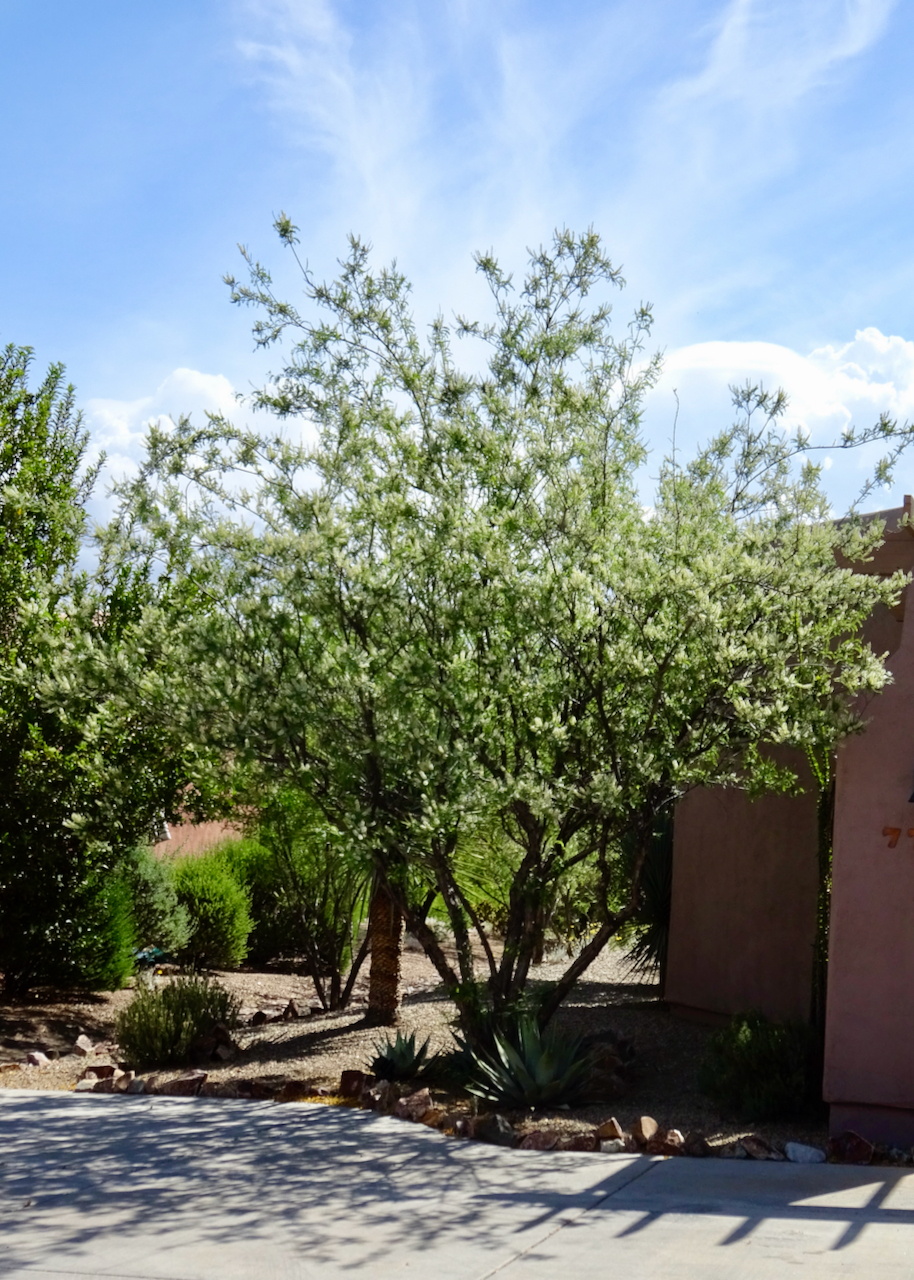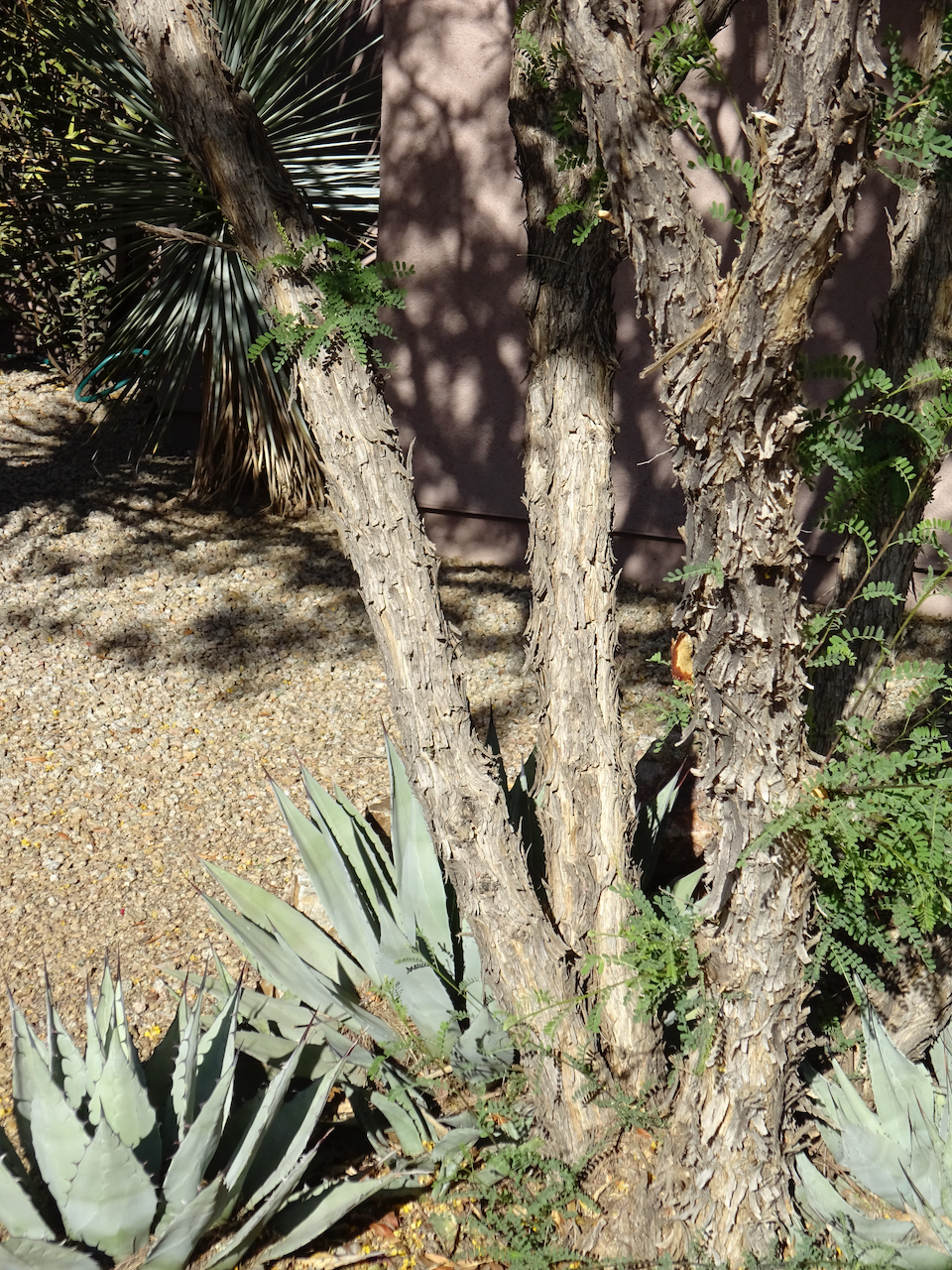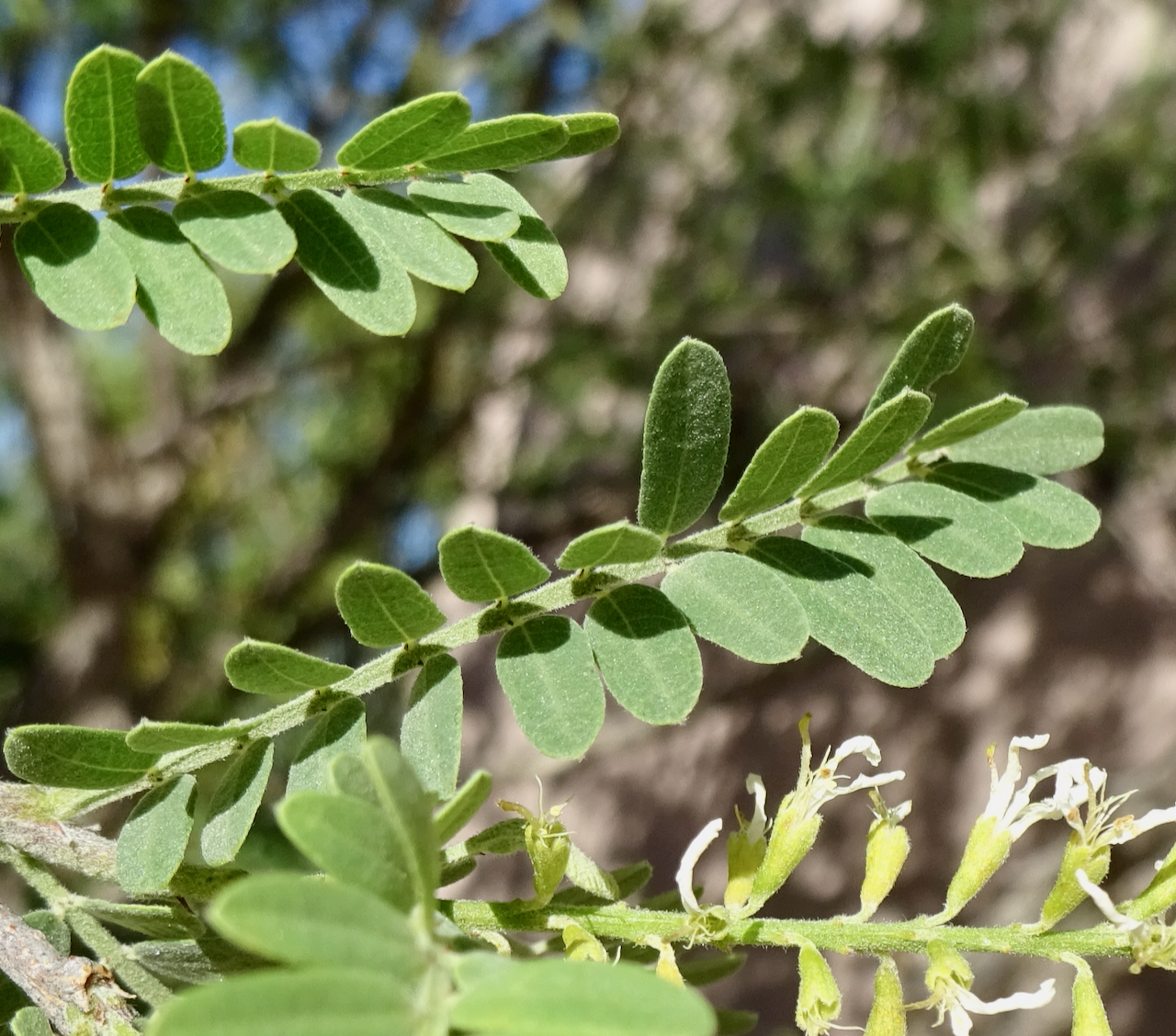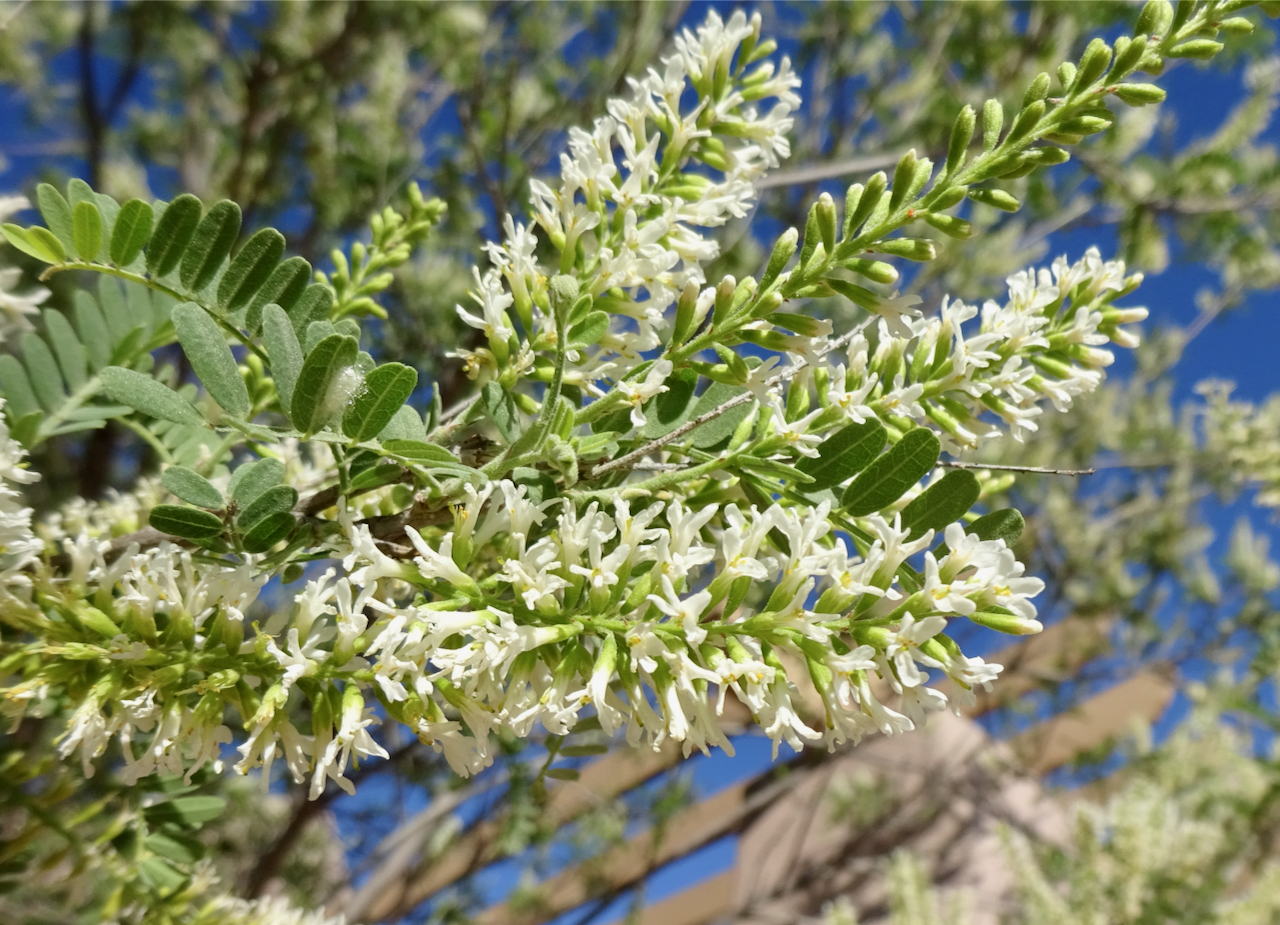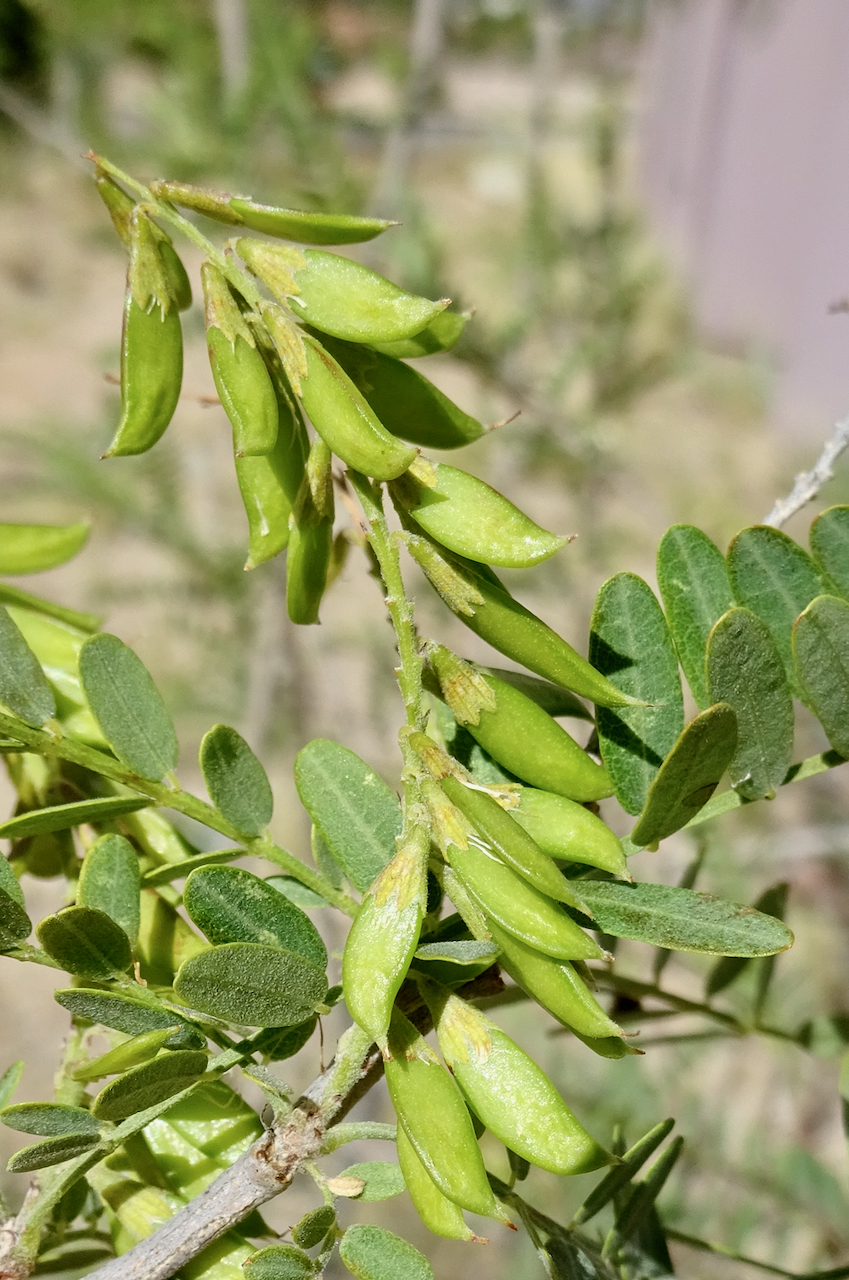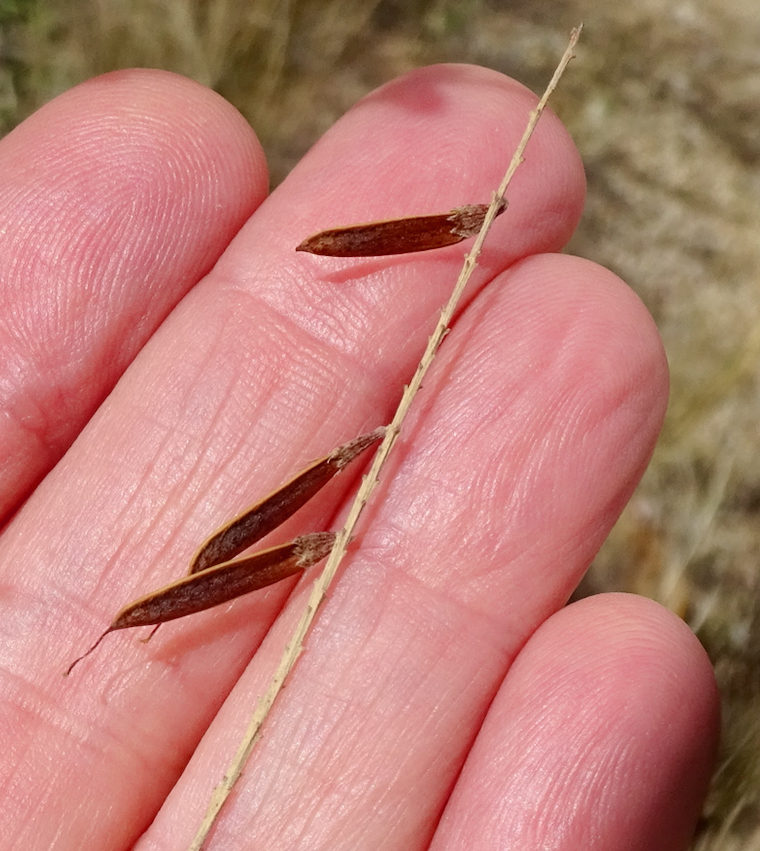Kidneywood
Eysenhardtia orthocarpa
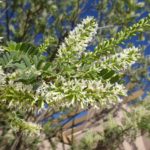
About the Plant
Kidneywood is native to southeastern Arizona, a large shrub or multistemmed tree that will grow to 15-20 feet, tall enough to provide shade for a patio or even the side of a house. This tree drops its leaves in winter. In April, the leaves return and the elongated clusters of white flowers appear. Flowering will continue off and on all summer.
If you want to grow kidneywood as a tree rather than a shrub, select a tree-form at the nursery. This tree is drought-tolerant but will be fuller with some irrigation. Protect the bark of newly-planted trees from hungry rabbits with a circle of chicken wire. The fruit is small but this plant has been known to reseed. If you grow it, look for new plants nearby.
Notes: kidneywood is fairly new to the nursery trade and owes its introduction to the Desert Legume Program at University of Arizona.
Wildlife value: bees, butterflies and other insects, and hummingbirds feed on the flowers. The leaves are food for the larvae of two native Arizona butterflies - gray hairstreak and Arizona mottled skipper.
More Information
Map of distribution in US (yellow means plant is native but rare)
Technical botanical description from SEINet
In books:
Trees and Shrubs for the Southwest by Mary Irish, page 197.
